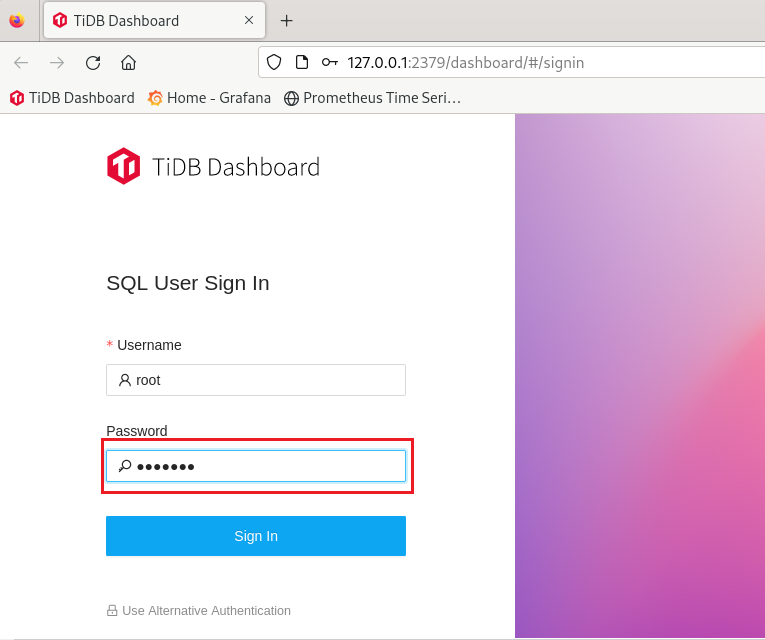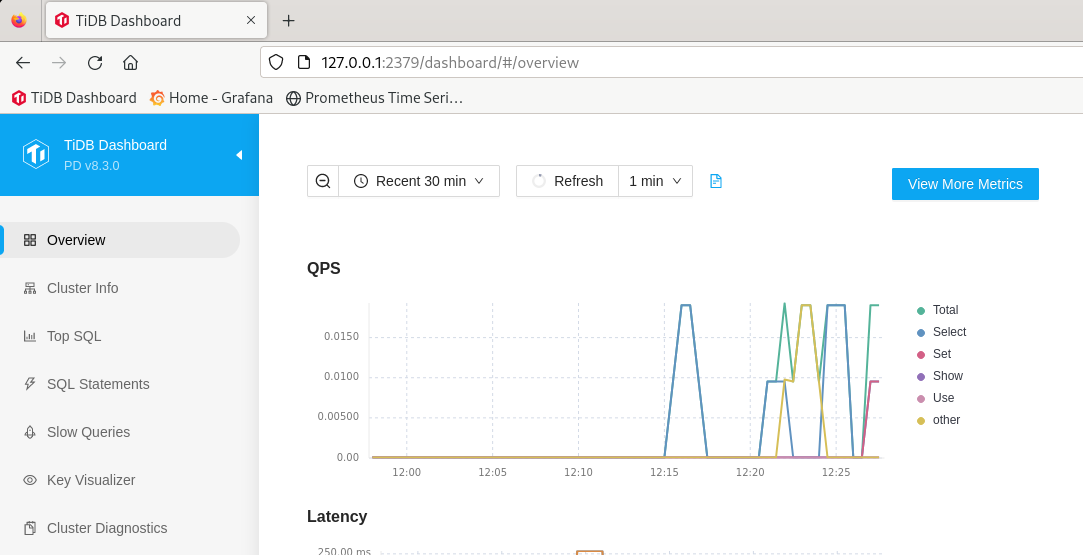Setup and installation of 'TiDB with Grafana & Prometheus: Real-Time Data & Analytics' on Azure
This section describes how to launch and connect to ‘TiDB with Grafana & Prometheus: Real-Time Data & Analytics’ VM solution on Azure.
- Open TiDB with Grafana & Prometheus: Real-Time Data & Analytics VM listing on Azure Marketplace.

- Click on Get It Now
-
Login with your credentials, provide the details here. Once done click on Continue.

-
It will take you to the Product details page. Click on Create.

-
Select a Resource group for your virtual machine
-
Select a Region where you want to launch the VM(such as East US)
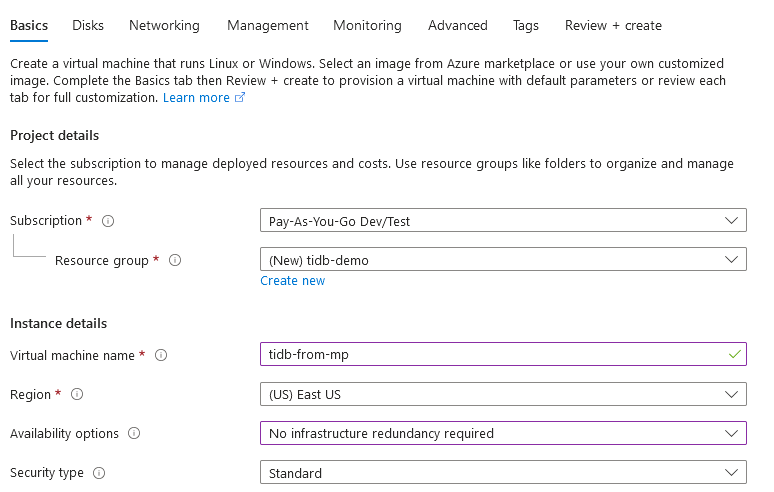
- Note: If you see “This image is not compatible with selected security type. To keep trusted launch virtual machines, select a compatible image. Otherwise change your security type back to Standard” error message below the Image name as shown in the screenshot below then please change the Security type to Standard.
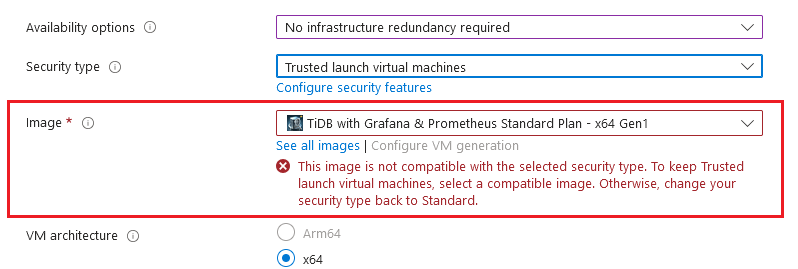

- Optionally change the number of cores and amount of memory. For swift performance please choose instances with 2 vCPU / 8GB RAM or more.
Select the Authentication type as Password and enter Username as centos and Password of your choice.
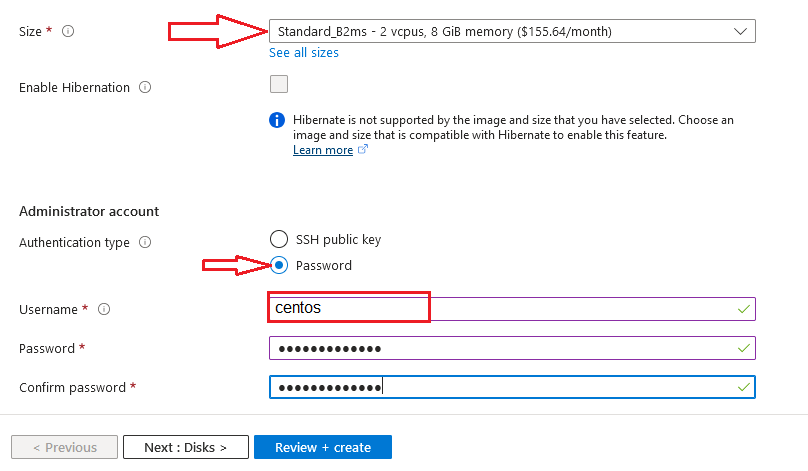
- Optionally change the OS disk size and its type.

- Optionally change the network and subnetwork names. Be sure that whichever network you specify has ports 22 (for ssh) and 3389 (for RDP) exposed.
The VM comes with the preconfigured NSG rules. You can check them by clicking on Create New option available under the security group option.


- Optionally go to the Management, Advanced and Tags tabs for any advance settings you want for the VM.
- Click on Review + create and then click on Create when you are done.
Virtual Machine will begin deploying.
- A summary page displays when the virtual machine is successfully created. Click on Go to resource link to go to the resource page. It will open an overview page of virtual machine.

- If you want to update your password then open up the left navigation pane, select Run command, select RunShellScript and enter following command to change the password of the vm .
sudo echo centos:yourpassword | chpasswd
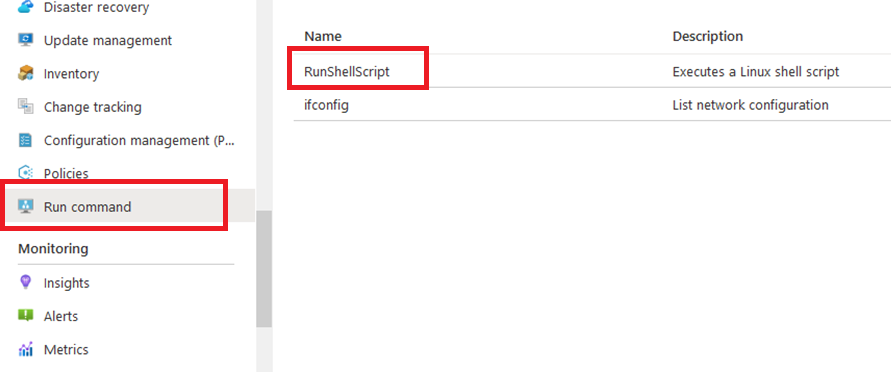
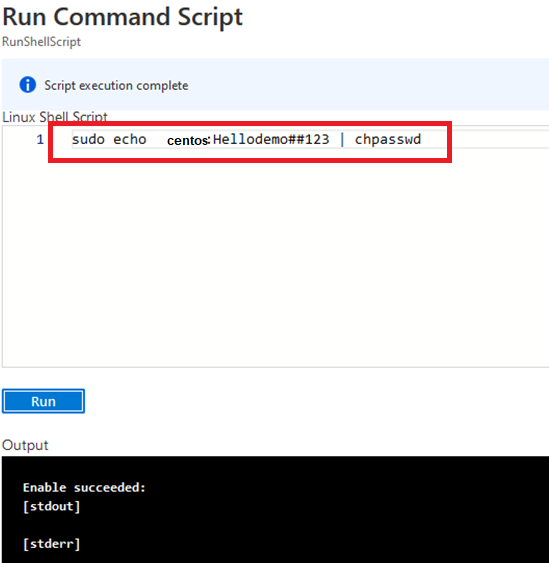
Now the password for centos user is set, you can SSH to the VM. To do so, first note the public IP address of the VM from VM details page as highlighted below
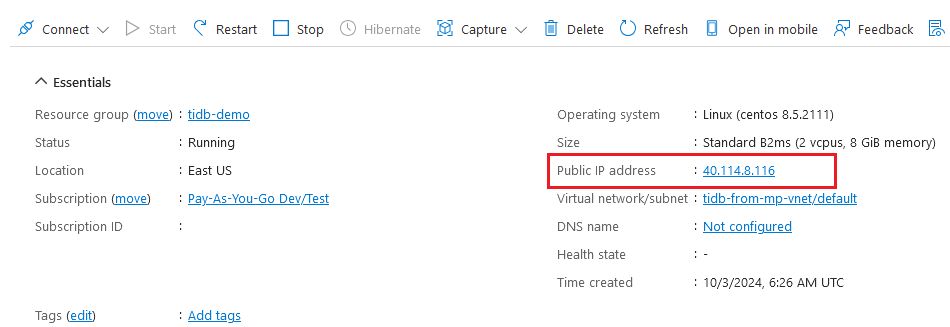
Open putty, paste the IP address and click on Open.
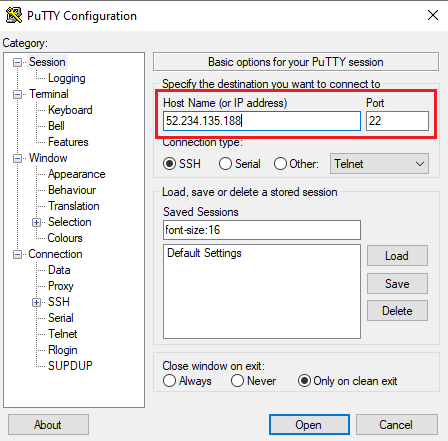
login as centos and provide the password for ‘centos’ user.

-
You can also connect to the VM’s desktop environment from any local windows machine using RDP protocol or local linux machine using Remmina.
-
To connect using RDP via Windows Machine, first note the public IP address of the VM from VM details page as highlighted below

- Then From your local windows machine, goto “start” menu, in the search box type and select “Remote desktop connection”.
In the “Remote Desktop connection” wizard, copy the public IP address and click connect

- This will connect you to the VM’s desktop environment. Provide the username (e.g “centos”) and the password set in above step to authenticate. Click OK
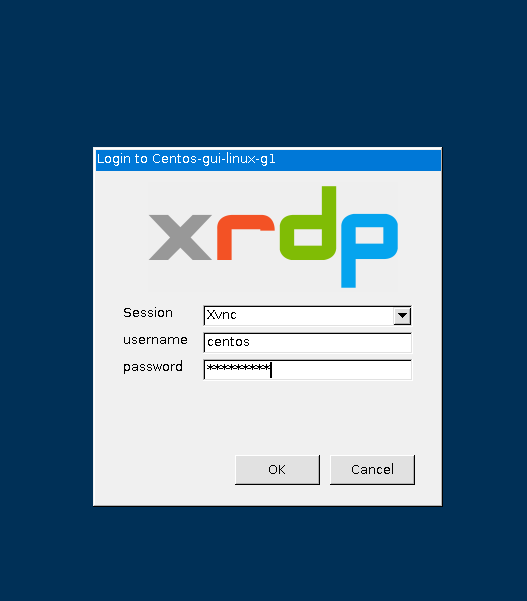
- Now you are connected to the out of box TiDB with Grafana & Prometheus: Real-Time Data & Analytics VM’s desktop environment via Windows Machine.
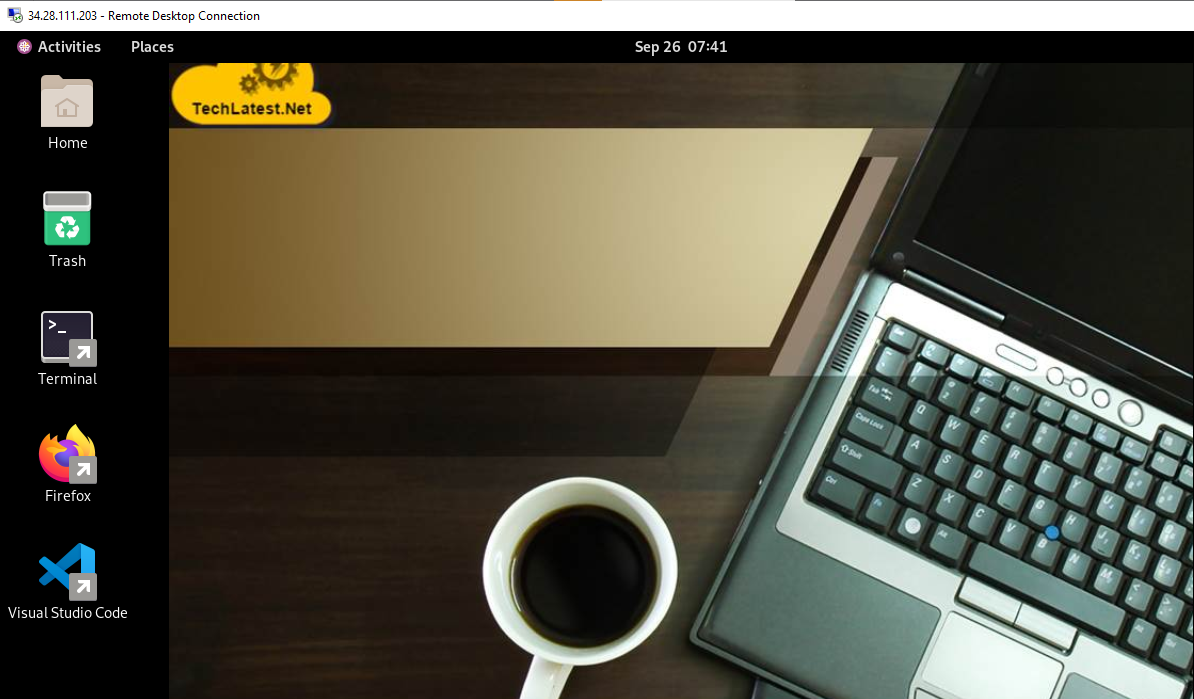
- To connect using RDP via Linux machine, first note the external IP of the VM from VM details page, then from your local Linux machine, goto menu, in the search box type and select “Remmina”.
Note: If you don’t have Remmina installed on your Linux machine, firstInstall Remmina as per your linux distribution.
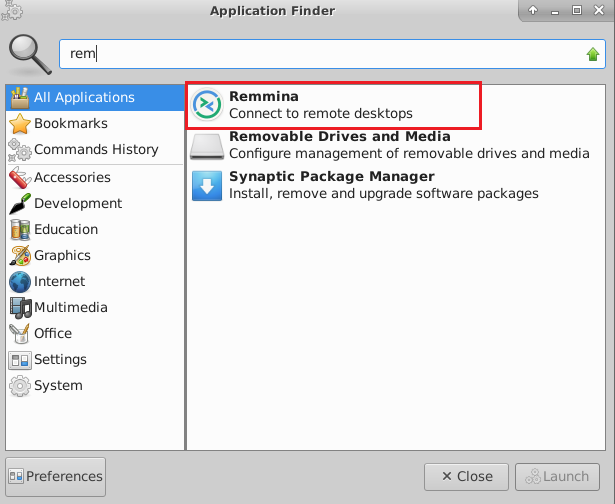
- In the “Remmina Remote Desktop Client” wizard, select the RDP option from dropdown and paste the external ip and click enter.
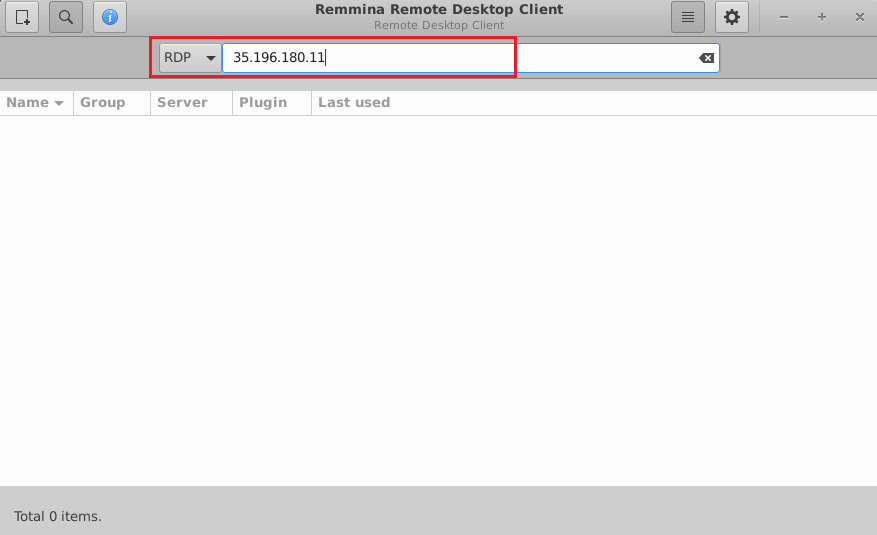
- This will connect you to the VM’s desktop environment. Provide “centos” as the userid and the password set in above password step to authenticate. Click OK
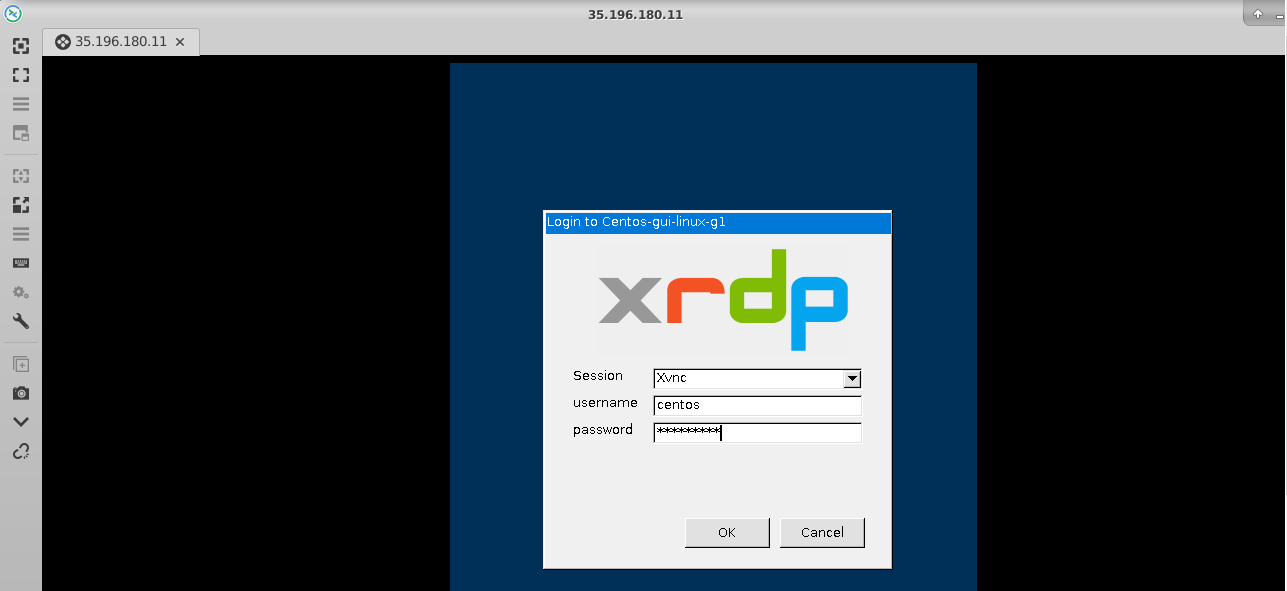
- Now you are connected to out of box TiDB with Grafana & Prometheus: Real-Time Data & Analytics VM’s desktop environment via Linux machine.

- Once you are connected to VMs desktop environment, you can access the TiDB User interface, Grafana UI and Prometheus from the Firefox Browser available on this Desktop.
NOTE: The User Inerfaces for TiDB, Grafana and Prometheus are accessible only via Remote Desktop and not on public internet due to security purpose and not to expose the DB on public internet.
-
TiDB dashboard-> http://127.0.0.1:2379/dashboard
-
Grafana UI-> http://127.0.0.1:3000
-
Prometheus-> http://127.0.0.1:9090
-
PD client endpoints-> 127.0.0.1:2379
- Double click on Firefox browser, by default it will open TiDB user interface as shown below. Login with root user and blank password. To set the password for TiDB UI, please follow steps 20 onwards in this guide.
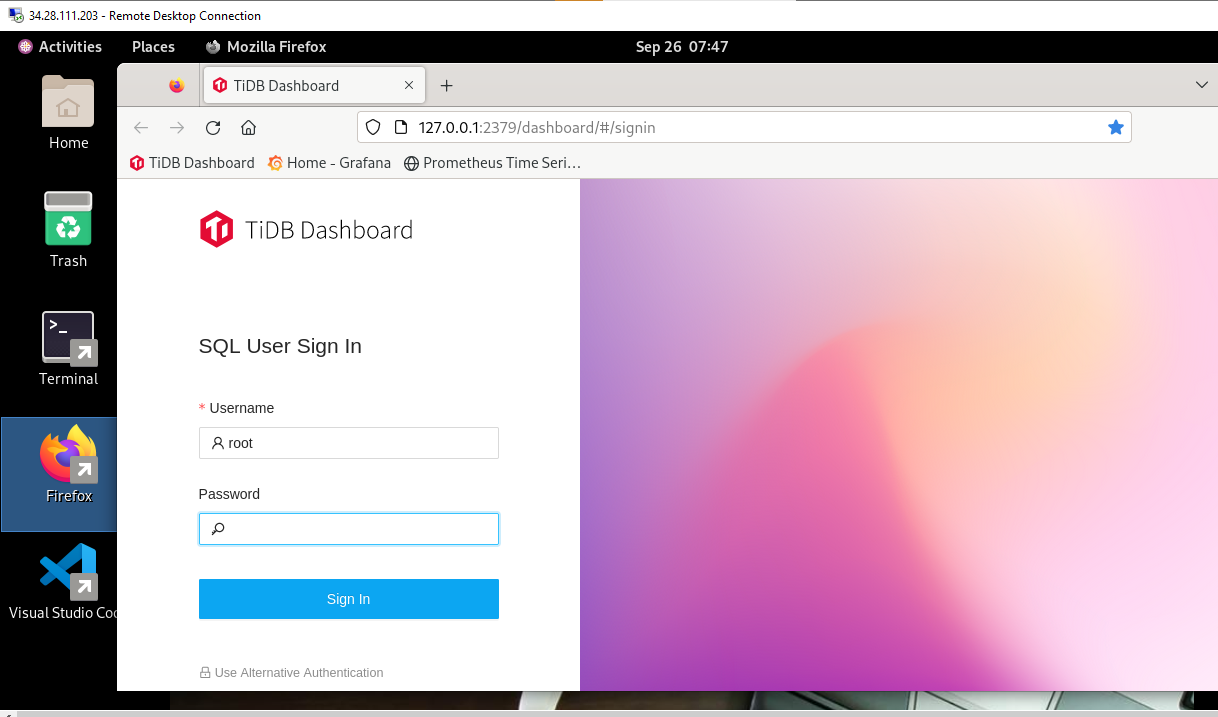
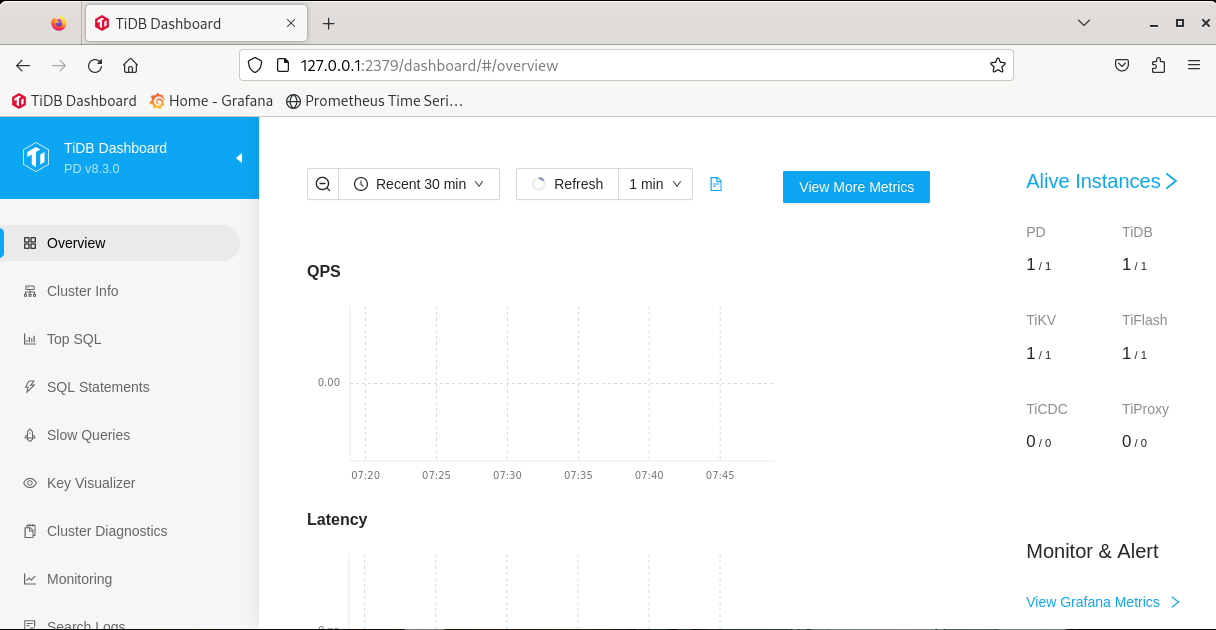
- In the Firefox browser, click on new tab and click Grafana bookmark from the bookmark toolbar. Login with below credentials.
Username: admin
Password: admin
It will ask you to enter new password on next screen. Provide the new password here and continue to dashboard.

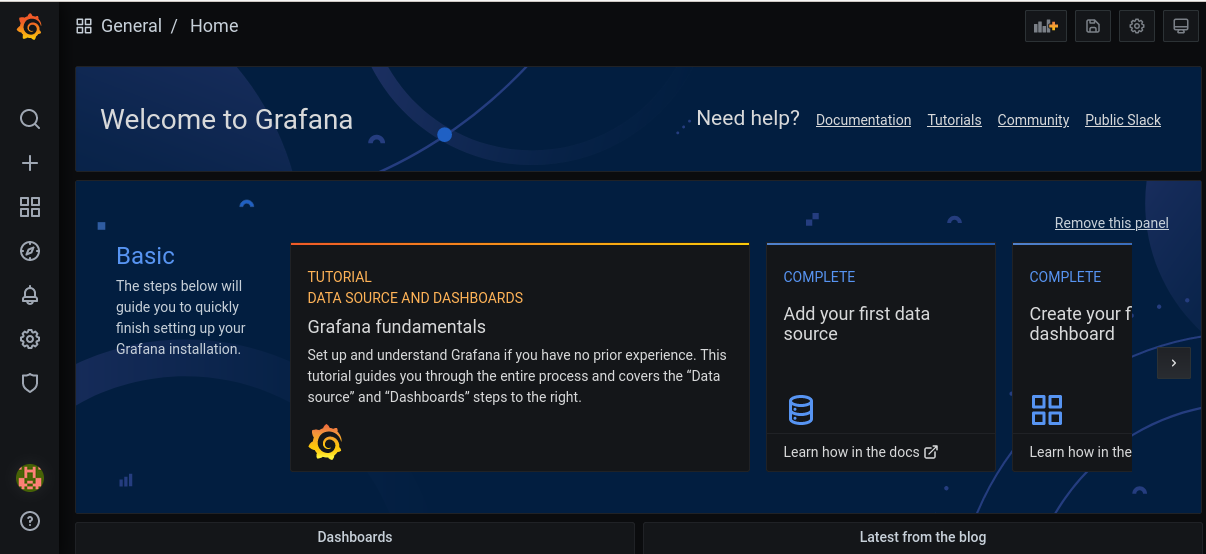
- You can also update the admin password from inside grafana dashboard. Click on user icon from bottom left and select Change password option.

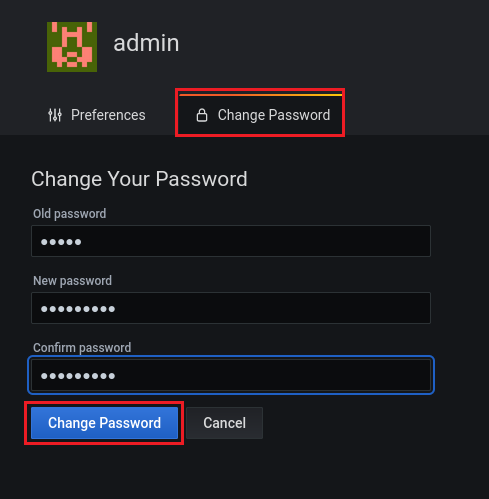
- Similarly open the Prometheus by clicking the Prometheus bookmark from the bookmark toolbar.

- To access TiDB via mysql client , run below command from terminal. This will prompt to enter root mysql password, hit enter if you did not set any password or provide root password if you set the root password.
mysql --host 127.0.0.1 --port 4000 -u root -p
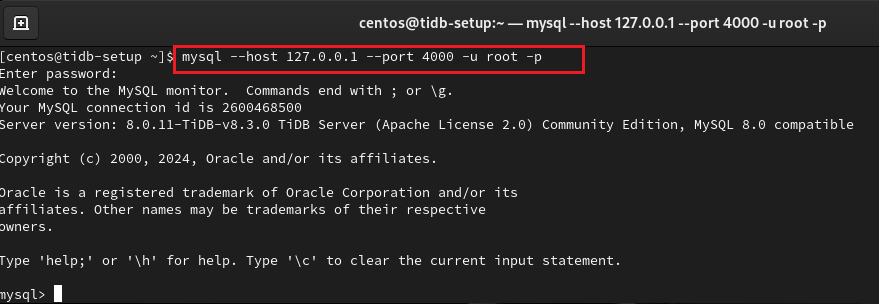
- Follow below steps to change root password for tidb dashboard login from mysql client.
a. Run below command in terminal to access TiDB via mysql client. Hit enter if you did not set any password previously. Then run the ALTER command as shown below.
mysql --host 127.0.0.1 --port 4000 -u root -p
ALTER USER 'root'@'%' IDENTIFIED BY 'new_password';
Replace new_password with your password.
b. Flush the privileges.
FLUSH PRIVILEGES;
EXIT;
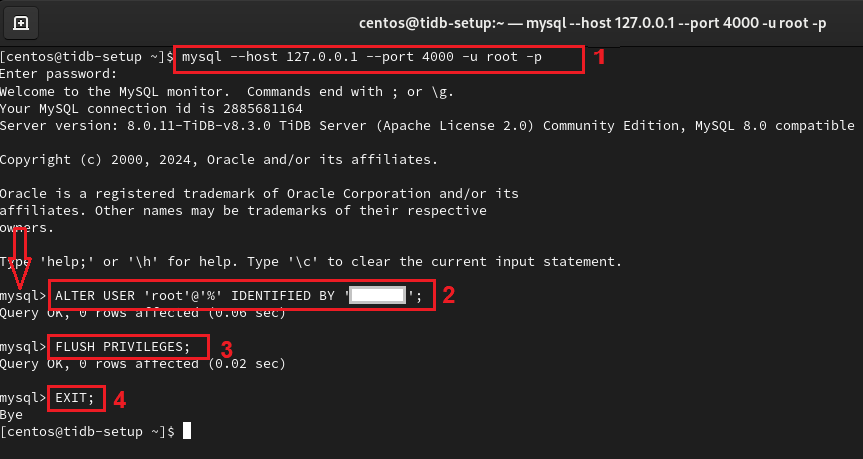
c. Now reconnect to DB using below command. It will prompt for the new password and set test as the DB to use.
mysql --host 127.0.0.1 --port 4000 -u root -p -e "use test;"

d. Now use the same password when logging in to TiDB Dashboard available at http://127.0.0.1:2379/dashboard using root userid.
